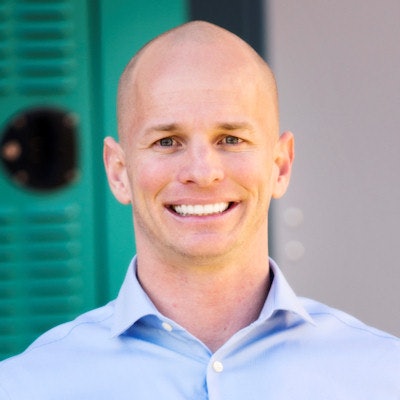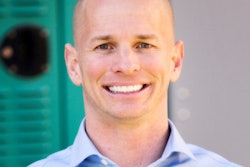
I recently spoke with a dentist in Colorado about his practice. He surprised me when he shared that not too long ago, he made the decision to leave dentistry. He didn't like what he was doing anymore and was ready to get out. He felt like he was only in it for the money and had lost his connection with his patients and team.
Then something important happened, and he rediscovered his passion for dentistry.
 Curtis Marshall.
Curtis Marshall.What caused this transformation? He was shown the percentage of his patients who were accepting treatment versus how many were being presented treatment. He was motivated by the data and realized he could make some changes to improve this percentage.
Once he saw where he was and a way that he could improve, he woke up. He saw a way to make a difference in the lives of his patients while also growing personally. He wanted to learn again, grow, and improve as a provider. He began taking classes, learned new skills, and added new services to his practice. And he's never been more excited about being a dentist.
What happens when you don't know the status quo
The reason dentists often make the decision to leave is because they can no longer see the impact they are having on their patients. They say something like "I don't understand why this is happening in my practice," or "I can't see where I'm at and where I'm going."
So why do most dentists get into dentistry? There are lots of reasons, of course. They see strong income potential. Perhaps they want the prestige of being a doctor. All want to serve and care for people. And some are excited about owning a business.
But once they start practicing, some may be surprised to discover that there's a lot of hard work involved and a lot of people are counting on them for their care. There are also parts of their job that they can't delegate, even if they are tired or lacking motivation.
Over time, some dentists talk about stepping away from the chair and either retiring or selling their practice. Others face issues relating to their physical or emotional health. Still others continue practicing but as an associate, not as an owner. Some are bored and/or burnt out. Some go into consulting or specialize in implants.
Why are they stepping away? Many say they are burnt out from the routine, the monotony, the physical strain, etc. Consider whether you are dealing with any of the following issues:
- I'm just trying to make payroll.
- I have two full-time jobs: dentist and practice owner.
- I'm trying to keep my staff and/or hire to fill COVID holes.
- I'm stressed out, worn out, and want to get out.
- I'm struggling with work/life balance; I have little or no family/personal time.
The underlying cause of many of these issues is the dentist not knowing their current status quo and where they want to go. This lack of insight makes it much harder to deal with the inevitable challenges that come from owning and running a business. Some dentists are trying to get by, and that's hard. In contrast, if they understand their status quo and have a clear vision of their desired destination, things will be different, and they will be able to survive the rigors of the grind.
Of course, discovering where you really are can cause some initial discomfort. But you know all about this experience. Whenever you diagnose disease or damage, you guide the patient through what may be unpleasant treatment with the assurance that when the pain is over, they'll be happier and healthier than before they were treated.
3 questions to work toward a healthier practice
Now let's get practical. Here are three important questions to help you know your status quo to work your way toward a healthier practice:
- How many patients left your office yesterday without their next appointment scheduled? Include in this number how many patients broke their appointment and didn't reschedule.
- How many average diagnosed dollars do you have each day? For example, if you do 10 exams and diagnose five of them each for $1,000, you have a total of $5,000. That means you averaged $1,000 per patient. This number helps you measure what you are diagnosing and how many patients you are diagnosing.
- From this average, how many of those dollars are either scheduled for future treatment or were completed after being diagnosed?
If you focus on tracking and improving these three things, you'll be better positioned to rediscover your love for dentistry. Rather than measuring collections, production, and new patients, these three metrics can be immediately addressed and improved. They also engage your team in caring for patients and making sure your chair is filled with the right patients (i.e., the patients most in need of treatment.)
Getting buy-in from your team
Speaking of your team, how can you get buy-in from them on this journey of discovery? The answer is the same. Help them focus on the status quo and vision. It's also easy for your team to get caught up in collections, production, and new patients.
Sometimes all they hear is "more!" More new patients. More collections. More production.
Status quo represents what is happening and why.
You might think that producing $20,000 in one day is better than producing $2,000, but, in fact, the $2,000 may represent a higher treatment acceptance percentage than the $20,000. Maybe you only collected $15,000 this month versus $100,000 last month, but, in fact, you had precollected in the higher month and weren't diagnosing as many dollars as you were in the month you did $15,000.
Status quo is what is actually happening, and you can only know this if you are accurately measuring it using some form of practice analytics.
If your team is struggling, helping them to see and understand what is really happening (status quo) can help them reengage and recapture the vision of the work and their contribution to the team's success.
If I step on the scale and it says I'm at my target weight, I know I should keep doing what I've been doing. But if it shows I'm 10-20 pounds over my target weight, I know, according to the status quo, that I need to make some changes.
With vision, making the effort to discover your status quo and then having the determination to do something about it can lead to real, sustainable growth. Getting there takes time and a willingness to endure some discomfort, but the end result will be so worth the effort.
Curtis Marshall is the director of partner operations for Dental Intelligence. Dental Intelligence is committed to helping practices grow in ways that matter. Request a free demo and learn how better data = better dentistry.
The comments and observations expressed herein do not necessarily reflect the opinions of DrBicuspid.com, nor should they be construed as an endorsement or admonishment of any particular idea, vendor, or organization.



















